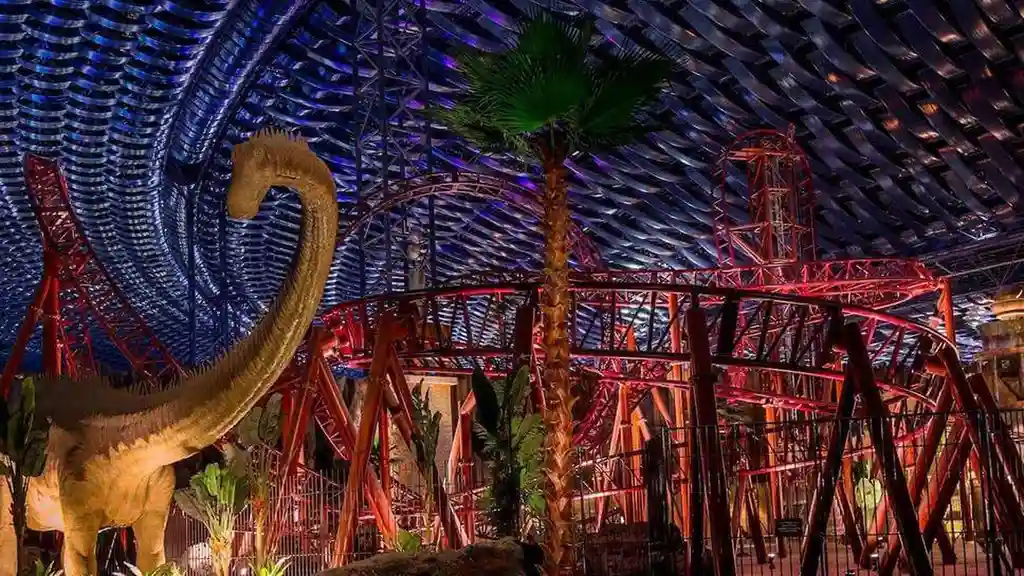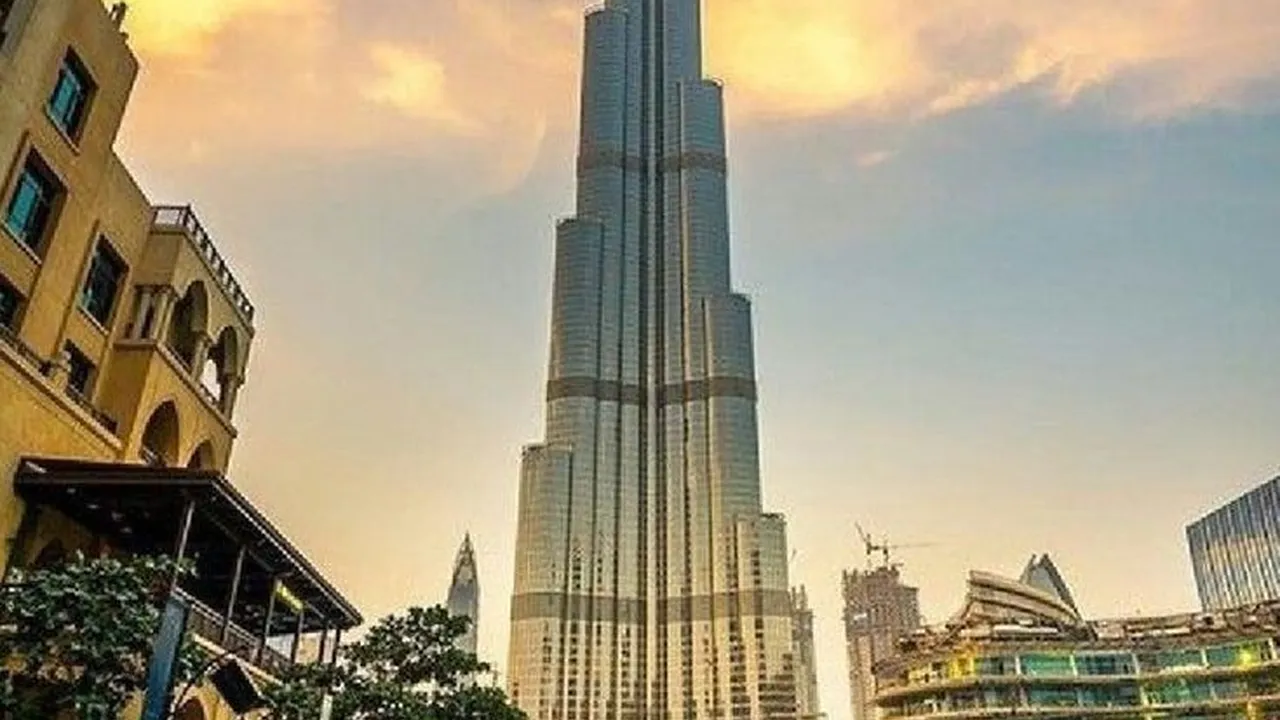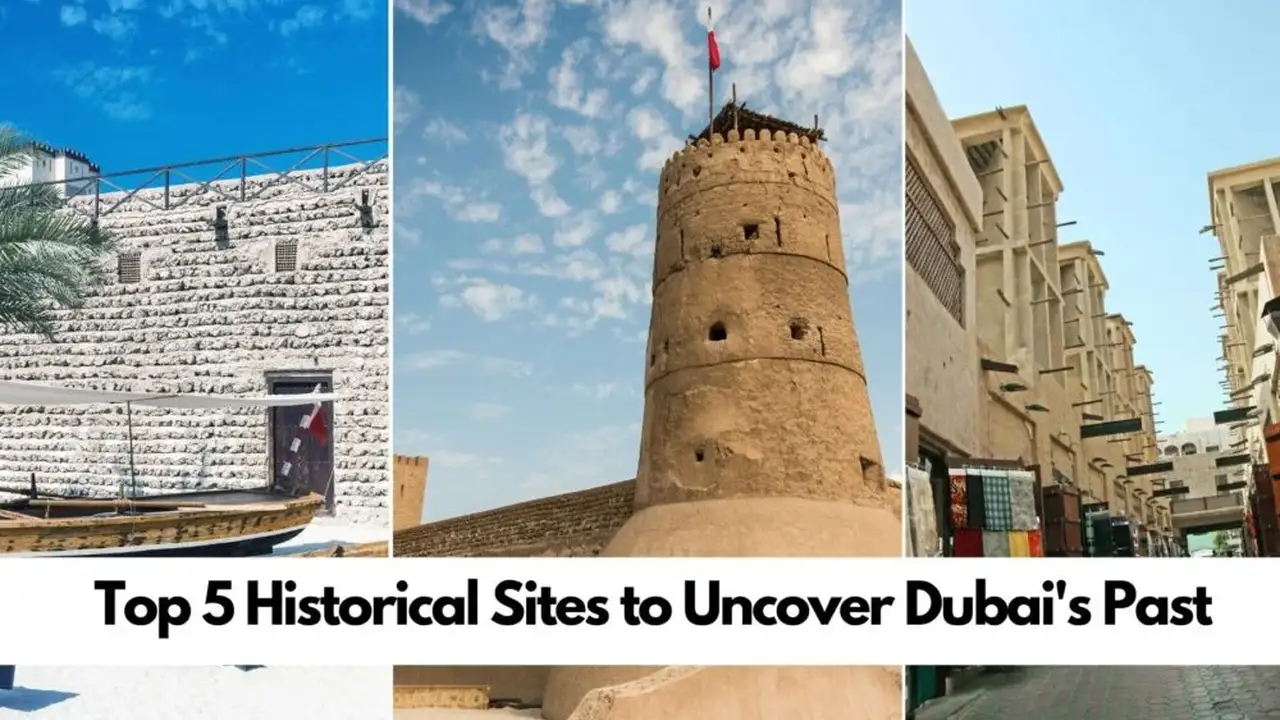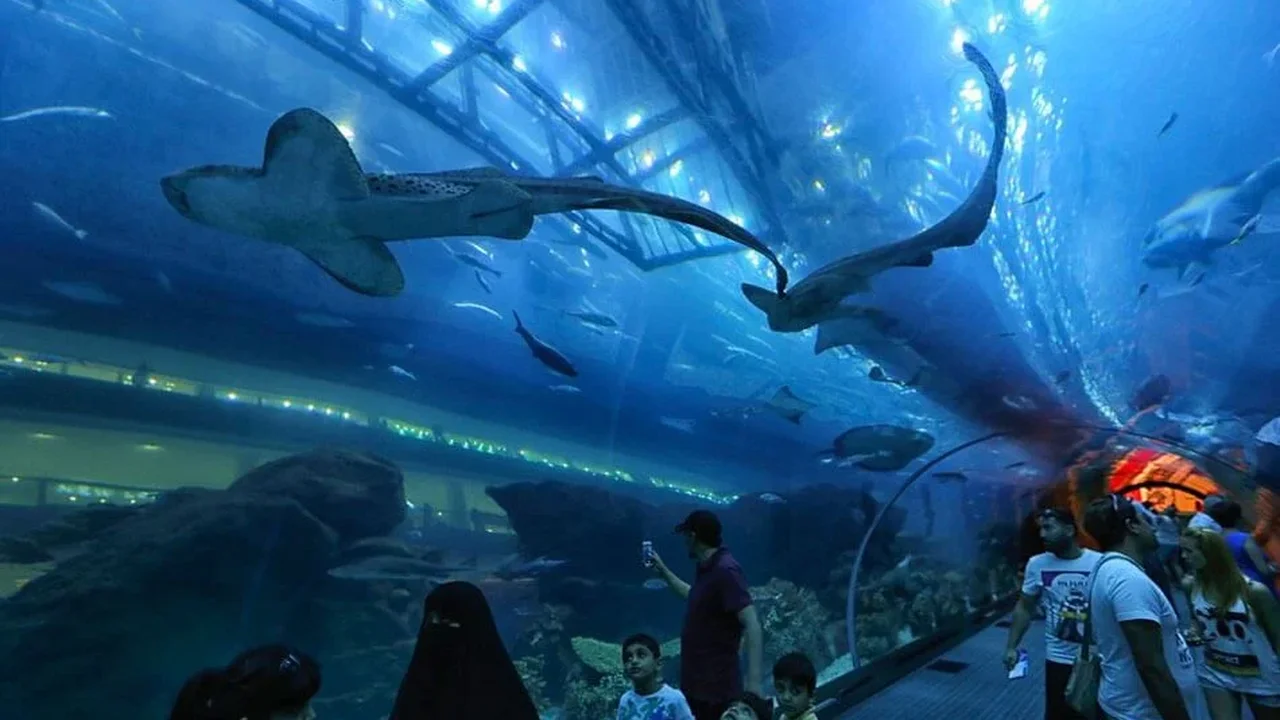The 3 Most Authentic Cultural Experiences in Old Dubai
Experience the heart of Old Dubai with these authentic cultural activities, from Abra rides to traditional performances, for a genuine local insight.
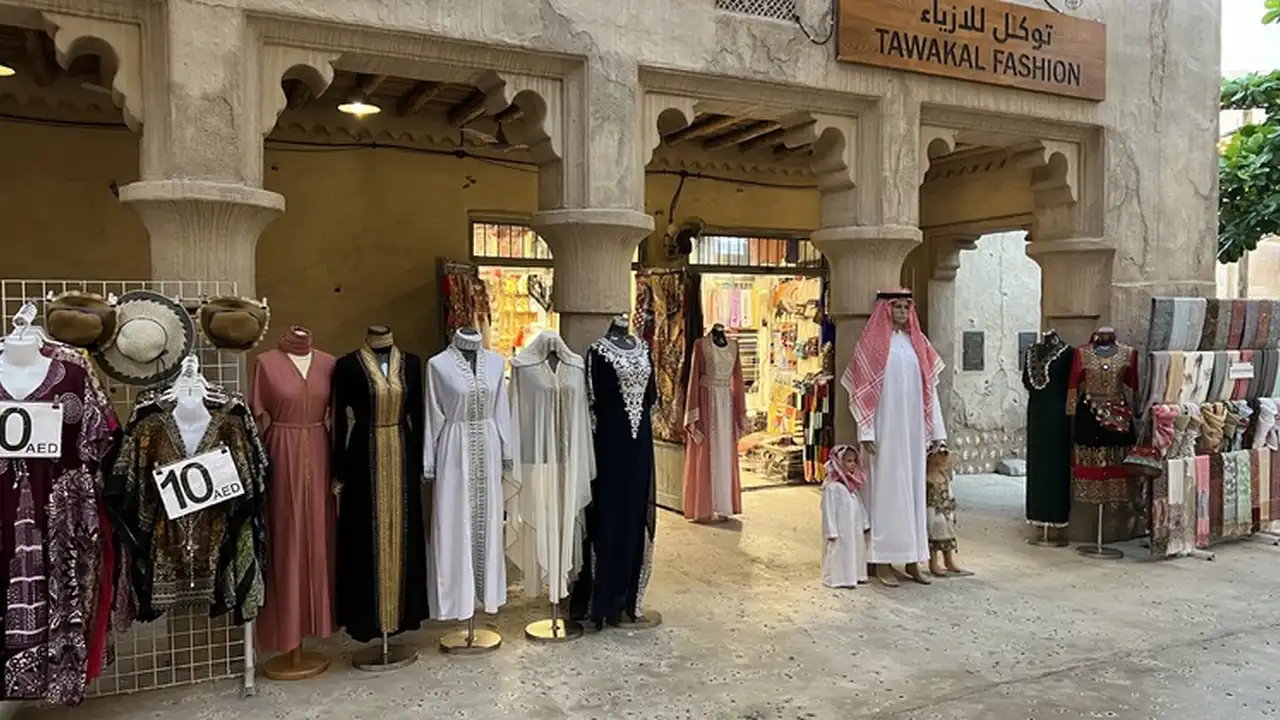
Discovering Old Dubai's Hidden Gems Authentic Cultural Experiences
Hey there, fellow travelers! So, you've seen the glitzy skyscrapers, the massive malls, and maybe even done a desert safari. But have you truly experienced the soul of Dubai? I'm talking about Old Dubai, the historical heart of this incredible city, where traditions thrive and the past whispers tales of pearl divers and spice traders. Forget the modern facade for a bit, because we're diving deep into the most authentic cultural experiences you can find here. And trust me, it's not just about looking at old buildings; it's about feeling the history, tasting the flavors, and hearing the stories.
Embracing the Abra Ride A Timeless Journey Across Dubai Creek
First up, you absolutely cannot visit Old Dubai without hopping on an Abra. What's an Abra, you ask? It's a traditional wooden boat, basically a water taxi, that's been ferrying people across Dubai Creek for centuries. It's not just a mode of transport; it's an experience in itself, offering a unique perspective of the city's bustling trade routes and historic architecture. The cost? A mere 1 AED (about 0.27 USD) per ride. Yes, you read that right! It's probably the cheapest and most authentic thrill you'll get in Dubai.
Why an Abra Ride is a Must Do Cultural Immersion
Imagine this: the gentle lapping of water against the wooden hull, the salty breeze on your face, and the panoramic views of the old souks on one side and the modern skyline peeking through on the other. It's a sensory overload in the best possible way. You'll see dhows (traditional cargo boats) being loaded and unloaded, hear the calls of vendors, and feel the pulse of a city that never truly sleeps. It's a stark contrast to the air-conditioned malls and luxury cars, and that's precisely its charm. It connects you directly to Dubai's humble beginnings as a fishing and trading port.
Comparing Abra Routes and Best Times to Ride
There are two main Abra routes across Dubai Creek. The most popular one connects the Bur Dubai Abra Station (near the Textile Souk) with the Deira Old Souk Abra Station (near the Spice Souk and Gold Souk). This is the classic route and highly recommended for first-timers. The second route connects the Al Sabkha Abra Station (Deira side) with the Bur Dubai Abra Station. Both offer similar experiences, but the first one is more central to the main souks. For the best experience, try to go during sunset. The golden hour light casts a magical glow over the creek, and the cooler temperatures make it even more enjoyable. Avoid midday during summer, as it can get quite hot.
Exploring the Al Fahidi Historical Neighborhood Stepping Back in Time
Once you've had your fill of the Abra, disembark at the Bur Dubai side and lose yourself in the labyrinthine alleys of the Al Fahidi Historical Neighborhood, also known as Al Bastakiya. This is where Dubai's heritage truly comes alive. It's a beautifully preserved area with traditional wind-tower houses, art galleries, museums, and charming cafes. It's a stark contrast to the modern city, offering a peaceful retreat and a glimpse into what Dubai looked like before the oil boom.
Architectural Wonders and Cultural Insights in Al Fahidi
The architecture here is fascinating. The wind-tower houses, or 'Barajeel,' were an ingenious form of natural air conditioning, designed to funnel cool air into the homes. Walking through these narrow lanes, you'll feel like you've stepped into a bygone era. Many of these houses have been converted into art galleries, museums, and guesthouses, each with its own unique story. Don't rush through; take your time to admire the intricate details of the wooden doors, the coral and gypsum walls, and the serene courtyards.
Must Visit Spots and Hidden Gems in Al Fahidi
While in Al Fahidi, make sure to visit the Dubai Museum, housed in the Al Fahidi Fort, the oldest existing building in Dubai. It offers a fantastic overview of Dubai's history and culture, from its humble beginnings to its rapid development. Another gem is the Sheikh Mohammed Centre for Cultural Understanding (SMCCU). They offer cultural meals, guided tours, and Q&A sessions where you can learn about Emirati customs, traditions, and religion in an open and informal setting. It's an incredible opportunity to engage directly with local culture. Also, keep an eye out for the various art galleries like the XVA Gallery and the Majlis Gallery, showcasing contemporary and traditional art.
Savoring Emirati Cuisine A Culinary Journey Through Tradition
No cultural immersion is complete without indulging in the local cuisine. Emirati food is a delightful blend of Middle Eastern and Indian influences, rich in spices and flavors. It's often overlooked in favor of international dining options, but trust me, you're missing out if you don't try some authentic Emirati dishes. It's not just about eating; it's about understanding the hospitality and traditions embedded in their food culture.
Top Emirati Dishes to Try and Where to Find Them
When it comes to Emirati food, start with Machboos, a fragrant rice dish with meat (usually chicken or lamb) and a blend of spices. It's hearty and incredibly flavorful. Another must-try is Harees, a slow-cooked dish of wheat and meat, often served during Ramadan. It has a unique, comforting texture. For breakfast, try Balaleet, sweet vermicelli noodles with an omelet on top – a surprisingly delicious combination. And don't forget the sweets! Luqaimat, sweet dumplings drizzled with date syrup, are addictive. You'll find these at traditional Emirati restaurants. Here are a few recommendations:
- Al Fanar Restaurant & Cafe: This place is designed to look like an old Emirati house, offering a truly immersive dining experience. They have branches in various locations, including Dubai Festival City and The Dubai Mall, but the one in Festival City often feels more authentic. Their Machboos and Luqaimat are highly praised. A typical meal for two here might cost around 150-250 AED (40-68 USD).
- Arabian Tea House Restaurant & Cafe: Located in the Al Fahidi Historical Neighborhood, this charming spot is perfect for a relaxed meal. They offer a wide range of traditional Emirati breakfast, lunch, and dinner options, along with a vast selection of teas. Their Balaleet is a popular choice. Prices are reasonable, with a meal for two costing around 100-200 AED (27-54 USD).
- SMCCU Cultural Meals: As mentioned earlier, the Sheikh Mohammed Centre for Cultural Understanding offers cultural meals where you can enjoy traditional Emirati food while engaging in a Q&A session about Emirati culture. This is less about a restaurant setting and more about a guided cultural experience. The cost for these experiences varies but typically includes the meal and the cultural discussion, often ranging from 100-150 AED (27-40 USD) per person. It's an excellent value for the cultural insight you gain.
The Significance of Dates and Coffee in Emirati Culture
You'll notice dates and Arabic coffee (Gahwa) are offered everywhere, from hotels to government offices. This isn't just a courtesy; it's deeply ingrained in Emirati hospitality. Dates are a staple food, rich in nutrients, and have been a vital part of the Bedouin diet for centuries. Arabic coffee, often served in small, handle-less cups, is a symbol of generosity and welcome. It's usually lightly roasted and flavored with cardamom. When offered, it's polite to accept at least one cup. It's a simple gesture that speaks volumes about the warmth of Emirati culture.
Beyond the Main Attractions Deeper Cultural Dives
While the Abra, Al Fahidi, and Emirati cuisine are fantastic starting points, Old Dubai offers even more opportunities for deeper cultural immersion. Think about visiting the various souks, not just for shopping, but for the experience of traditional trade and haggling. The Spice Souk, the Gold Souk, and the Textile Souk each offer a unique atmosphere and a chance to interact with local vendors.
Navigating the Souks A Shopper's and Observer's Guide
The Gold Souk is dazzling, with rows upon rows of glittering gold jewelry. Even if you're not buying, it's an incredible sight. Prices are based on weight and daily gold rates, plus a making charge. Haggling is expected! The Spice Souk is a feast for the senses, with aromatic spices, herbs, and dried fruits. You'll find everything from saffron to frankincense. The Textile Souk offers a vibrant array of fabrics, from silks to cottons, perfect for custom-made outfits. Remember, haggling is part of the fun and expected in all these souks. Don't be afraid to negotiate for a better price.
Cultural Performances and Local Festivals
Keep an eye out for local cultural performances, especially during festivals like the Dubai Shopping Festival or Eid. You might catch traditional Emirati dances like the Al Ayala, or musical performances. These events are often free and offer a lively insight into local customs. The Al Marmoom Heritage Village, though a bit further out, also hosts cultural events and showcases traditional Emirati life, especially during the Al Marmoom Heritage Festival.
Practical Tips for an Authentic Old Dubai Experience
To make your cultural journey through Old Dubai as smooth and enjoyable as possible, here are a few practical tips:
- Dress Modestly: While Dubai is generally tolerant, especially in tourist areas, when visiting traditional neighborhoods and religious sites, it's respectful to dress modestly. This means covering your shoulders and knees.
- Cash is King (Sometimes): While many places accept cards, especially in the souks for smaller purchases or Abra rides, having small denominations of AED cash is very useful.
- Stay Hydrated: Especially if you're visiting during the warmer months, carry water with you. Exploring the souks and historical areas involves a lot of walking.
- Be Open to Interaction: Emiratis are generally very hospitable. Be open to striking up conversations, asking questions, and learning from locals.
- Respect Local Customs: Be mindful of prayer times, and if you hear the call to prayer, you might notice some shops temporarily closing.
- Consider a Guided Tour: If you prefer a structured experience, many local tour operators offer walking tours of Old Dubai that include the Abra ride, souks, and Al Fahidi. This can be a great way to get insights from a local guide.
So, there you have it! Old Dubai is a treasure trove of authentic cultural experiences, offering a stark and beautiful contrast to the city's modern marvels. It's a place where history breathes, traditions thrive, and every corner tells a story. Don't just visit Dubai; experience its heart and soul. You won't regret it!
:max_bytes(150000):strip_icc()/277019-baked-pork-chops-with-cream-of-mushroom-soup-DDMFS-beauty-4x3-BG-7505-5762b731cf30447d9cbbbbbf387beafa.jpg)



